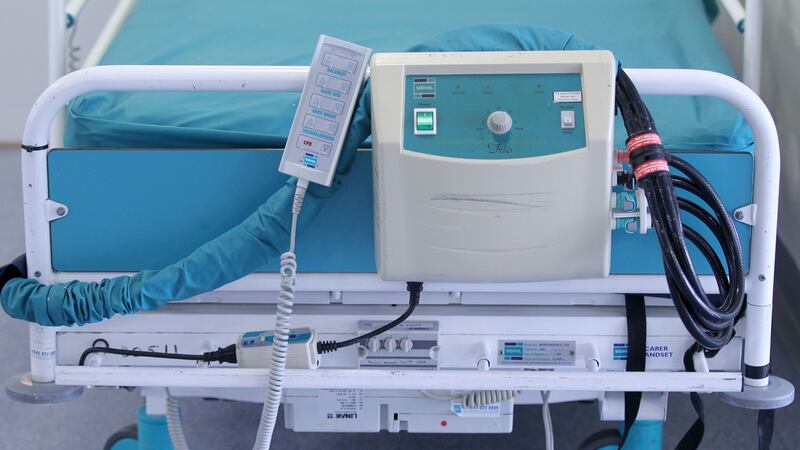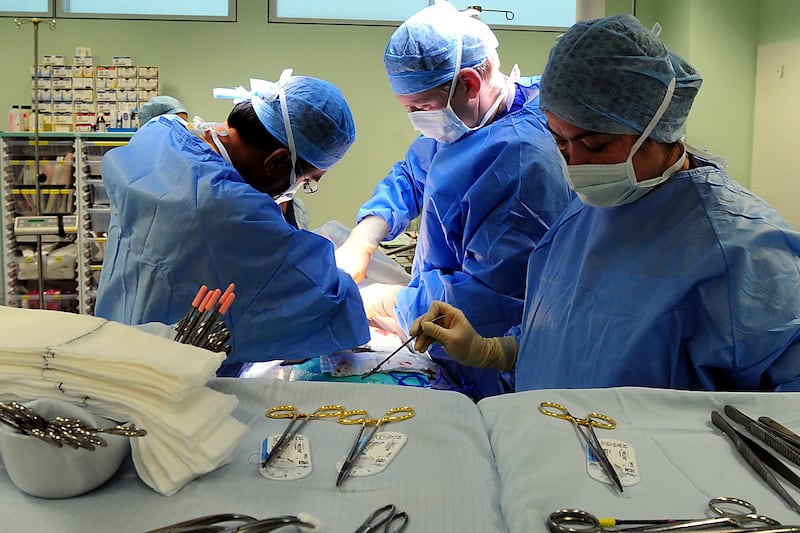A device which sends electrical impulses down the legs of stroke patients can cut the risk of deadly blood clots, a hospital study has found.
New research shows that the geko reduces the risk of clots compared to standard treatment, is comfortable to wear and could save the NHS cash.
Approved for use on the health service, the geko is a battery-powered, disposable, device designed to increase blood flow in the deep veins of the legs.
Its action is the equivalent of about 60% of walking – even though the patient does not have to move.
Dr Indira Natarajan, a consultant stroke physician and clinical director of neurosciences at the Royal Stoke University Hospital, has conducted an in-hospital study to see how effective the device is.
He said it was particularly useful for patients who cannot tolerate intermittent pneumatic compression (IPC) – the standard treatment recommended for preventing blood clots.
His study of 219 patients fitted with the geko found no evidence of blood clots within three months of discharge, compared with 11 cases of blood clots in 463 people prescribed IPC.
Dr Natarajan said: “When patients are admitted for stroke, one of the major complications is the formation of clots in the legs.
“These clots can sometimes move from the legs to the lung and cause a pulmonary embolism, which can be fatal.
“Around 30% of patients cannot go on an IPC pump, which puts pressure on calf muscles.
“They can’t use this standard treatment for a variety of reasons, such as having leg ulcers, broken skin or fluid in the leg.
“A lot of people also find that a sleeve pumping pressure down their leg means they can’t sleep.
“The geko gets round these problems. It’s like a half wrist-watch which fits round the outside of the knee joint.
“It produces an electrical impulse down the leg and the intensity can be increased or decreased by a plus or minus switch.”
Dr Natarajan said he would like to see more research to see if the geko could be used as a first-line treatment for stroke patients.
Despite being approved by the National Institute for Health and Care Excellence (Nice) in 2014, the device is still not widely used in all NHS trusts.
A Nice spokesman said its guidance encourages “the NHS to consider using the geko device as an option for people who have a high risk of developing blood clots in the leg where standard methods of preventing them aren’t suitable or can’t be used.
“The low risk of the device causing any harm was an additional factor in the guidance supporting routine NHS use of the device for patients at high risk who have no preventative options.
“We estimated that when the device was used in this way it would save the NHS almost £200 per patient treated.”
The geko, manufactured by UK-based Sky Medical Technology Ltd, costs £22 per device, with patients wearing one on each leg.








